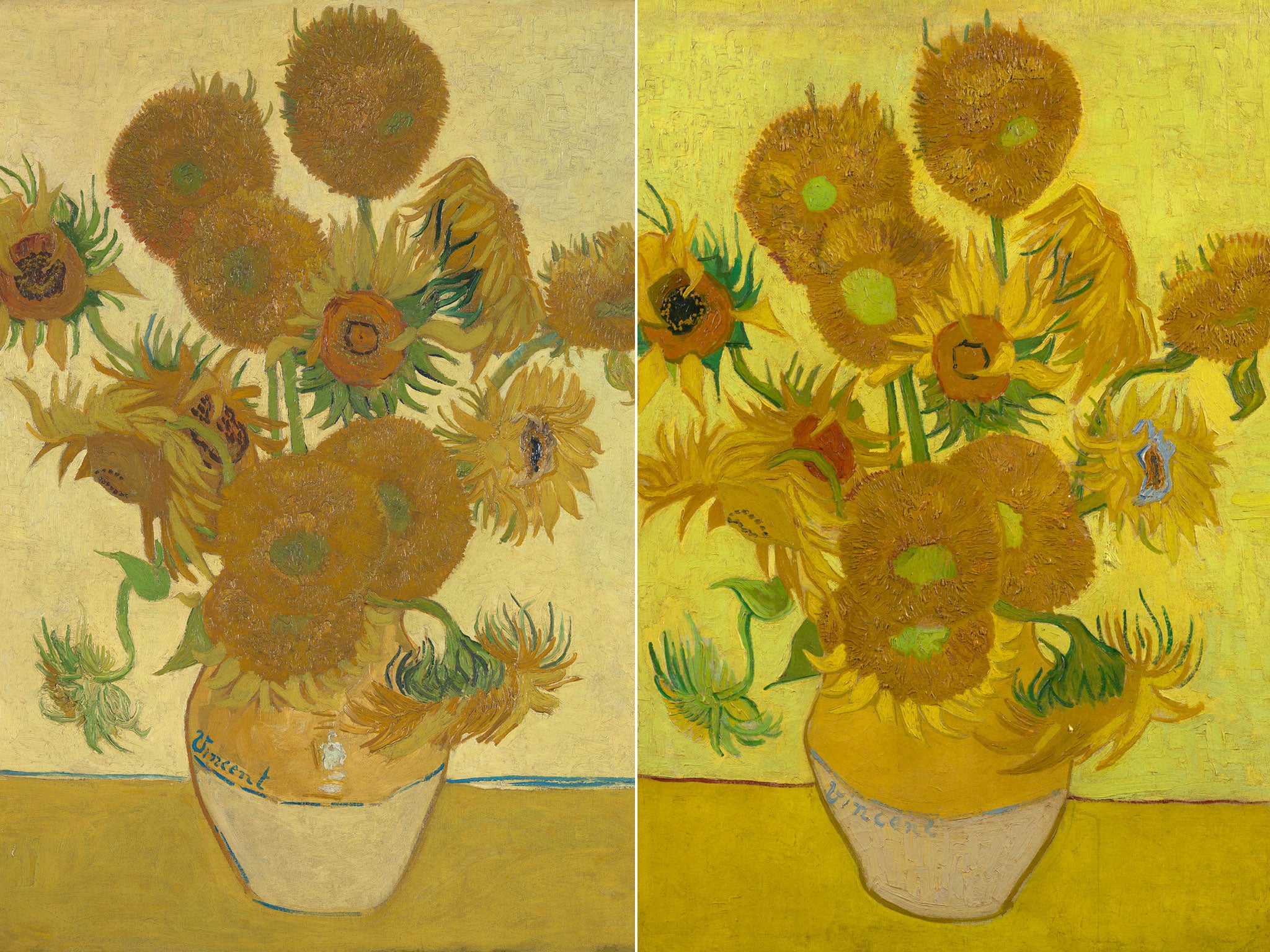Two Van Gogh Sunflowers shown together at National Gallery for first time in 65 years
Can you spot the difference?

Your support helps us to tell the story
From reproductive rights to climate change to Big Tech, The Independent is on the ground when the story is developing. Whether it's investigating the financials of Elon Musk's pro-Trump PAC or producing our latest documentary, 'The A Word', which shines a light on the American women fighting for reproductive rights, we know how important it is to parse out the facts from the messaging.
At such a critical moment in US history, we need reporters on the ground. Your donation allows us to keep sending journalists to speak to both sides of the story.
The Independent is trusted by Americans across the entire political spectrum. And unlike many other quality news outlets, we choose not to lock Americans out of our reporting and analysis with paywalls. We believe quality journalism should be available to everyone, paid for by those who can afford it.
Your support makes all the difference.The National Gallery is set to invite art lovers to play “spot the difference” on a grand scale as two iconic Van Gogh paintings will be shown side-by-side in the UK for the first time in 65 years.
The National Gallery will display a “great treat for the public” hanging its own version of Sunflowers alongside that painted five months later that hangs in the Van Gogh Museum in Amsterdam.
Ella Hendriks, senior paintings conservator at the Van Gogh Museum, said: “When we came to hang these together it was a real eye-opener. It’s almost like a spot the difference game.”
She continued: “Looking at the slight differences in colour, the brush work and texturing. It’s a fantastic opportunity to discover the similarities and differences of the two versions.”
The two paintings will go on display tomorrow at the Trafalgar Square gallery until April 27.
Christopher Riopelle, curator of post-1800 paintings at the National Gallery, said: “One of the great fascinations of seeing them together is seeing the ways in which this brilliant artist working on his great theme extends, animates, reinvents the subject of the sunflower.”
“In the copy he’s varying the paint application, the difference in colour accents,” Ms Hendriks said. “They’re such powerful pictures. They’re so simple, but emotive. His use of colour, forceful brushworks and thick application of paint seems a very direct way of working.”
The works will be shown alongside recent x-rays that revealed new information about the artist’s painting style and materials and finally confirmed which one was painted first.
Martin Bailey, author of The Sunflowers are Mine: The Story of Van Gogh’s Masterpiece, said: “This is a once in a lifetime opportunity. It will encourage people to look more closely at them. We know them so well from reproduction that our eyes glaze over. Seeing the paintings in the flesh is so different from a reproduction.”
The National bought its version of the Sunflowers, one of the most popular works in the gallery and still the top-selling postcard, in 1924 from the artist’s family.
Mr Riopelle revealed that when the work was lent to the Van Gogh Museum for its re-opening, they received daily complaints from disgruntled visitors who had come to see it.
It has now paired it with the work that hangs in the Van Gogh Museum in Amsterdam for the first time in the UK in living memory. The last time was at Tate, now Tate Britain, in 1947. Both works are believed to be worth more than £100m each.
The research from the two institutions, which have worked together on the Sunflowers since the 1990s, has revealed new details about the pigment Van Gogh used and how he planned the works in charcoal. The x-ray also revealed a wooden slat, which the artist affixed after he painted one of the flowers too close to the top of the canvas.
These are two of five versions, with the others in Tokyo, Munich and Philadelphia. The National said the other works were too fragile to travel.
The series dates to 1888 when Van Gogh rented a house in Arles in the South of France. He painted the sunflowers while waiting for his friend Paul Gauguin to arrive.
Mr Riopelle said. “You’re seeing the National’s version done from nature in the summer, and the other… is the rethinking and carrying forward of the process. It is not in any way a copy,” adding it was a “more stylised and more coloured, extravagant version”.
Join our commenting forum
Join thought-provoking conversations, follow other Independent readers and see their replies
Comments